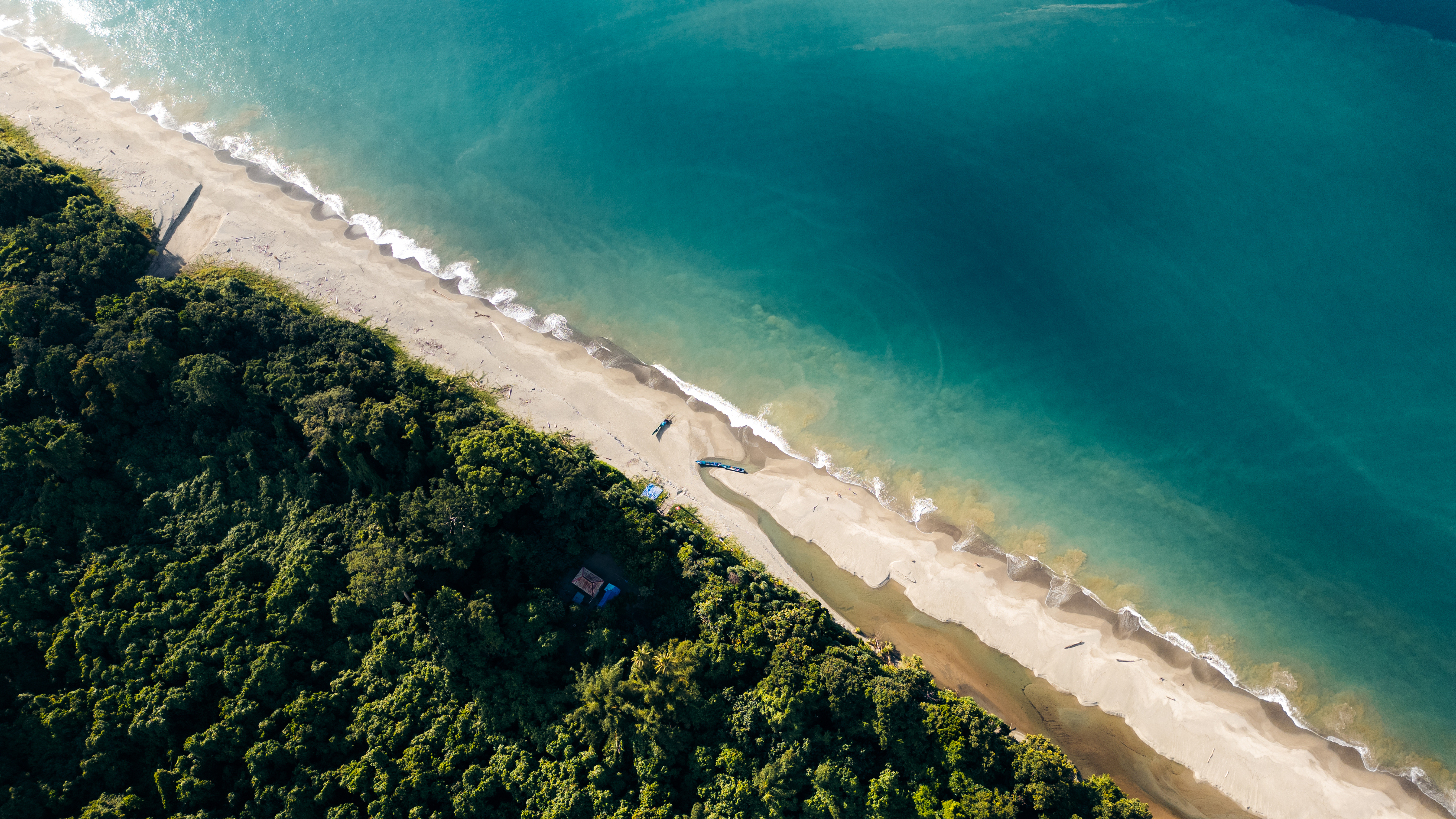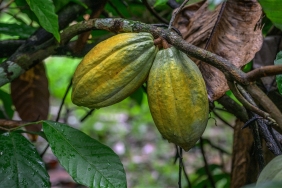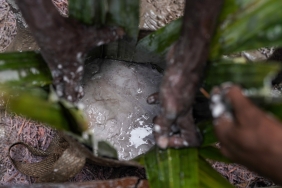STONES AND COCONUT LEAVES FOR FISHING RODS
By: Irwanto - WWF Indonesia, Papua Program
That morning, Ronal hurriedly stepped onto the sandy beach. He carried a Papuan embroidered bag filled with tools for fishing in the sea near his village, Yomakan. Occasionally he whistles to the rhythm of the wind that erodes the edge of his boat towards nonako (the local term for fisihing ground). His muscles popped out of his sleeves as he pulled the starter boat engine that drove his beloved fleet into battle.
Walking along the small rocky island, Ronal picked up dozens of stones the size of an adult's hand. He placed them on the boat right in front of his captain's throne. Something I didn't understand made me ask him "what are the stones for?" Ronal replied "the stone is for ballast. Later it will become a fish house." Then he continued his sentence by loudly saying "we have taken a lot from nature, so we must give a lot to nature."
Yomakan Village is located at the southern tip of Rumberpon Island - West Papua. It is located within the Cenderawasih Bay National Park (TNTC) and not so far from the mainland of Papua. Yomakan Village includes a series of small islands around it that are rich in land and marine biota. Most of the population are fishermen with fairly simple fishing fleets. The fishermen catch economically important fish that are also targeted by fishermen from outside the village area. This village is nicknamed the Vietnamese village. Not because the residents look like Vietnamese or are often visited by Vietnamese. This is because in this village, the fishermen use dopis (local term for bombs) to find fish so that it resembles the conditions of the Vietnam war.
The use of dopis is quite common in this village, ranging from teenagers to the elderly. They can assemble and operate them. The target of dopis is not only small pelagic fish such as Rastrelliger and Decapterus but also coral demersal fish such as Scarus, Plectropomus, and Lutjanus. The discarding sites of dopis are around the village waters, small islands around the village, and around the boat mooring jetty. In just a few days, more than 4 ha of corals were broken and destroyed by the explosion of dopis. The deterrent effect has not yet been felt by the perpetrator even though there have been many victims and even deaths.
Ronal is one of the few fishermen who are aware of the adverse effects of using dopis. He and several other fishermen in his village have understood the importance of protecting natural resources. Habitat destruction, reduced fish stocks and the loss of many important species are the main reasons for abandoning dopis. He fishes the way his ancestors have taught him for generations. One way is by using natural materials such as young coconut leaves (shoots) and stones the size of an adult's hand. The stone is tied using coconut leaves cut to a length of about 30 cm then the hook (fishing eye) is hooked at the top end of the leaf. Artificial bait is attached to the hook and sunk to the seabed. Upon arrival, the hook is jerked up until it comes off the end of the leaf and then the nylon fishing line is pulled up to the surface. In less than 10 seconds, the fish has grabbed the bait and hooked onto the hook. Fishing locations are determined based on where their ancestors have been fishing for generations. Until now, the location is spread based on the clans in Yomakan Village.
There is something very interesting and only some fishermen realize it. Stones tied in the leaves are used as hook weights. If this activity is carried out every day, there are tens or even hundreds of stones that have been stored in the same place for years. "The stones can become fish houses and the leaves tied to the stones can become a place for fish eggs to stick," Ronal explains. It is no wonder that the number of fish caught every day does not decrease. Inadvertently, Ronal and the other fishermen have artificially created a natural coral reef in the sea around their settlement.
Ronal is one of the few fishermen who is aware of the reciprocal relationship with nature. Support and attention are needed to bring out similar figures. So that there will be many fishermen who are active in the utilization of fishery resources that are environmentally friendly and sustainable.
Together with several other fishermen, Ronal has identified the potential of natural resources in his village. Through the Participatory by Potential Lives method facilitated by WWF Indonesia, Ronal and his colleagues have developed a joint program to manage problems into potential productive actions that are environmentally friendly.





